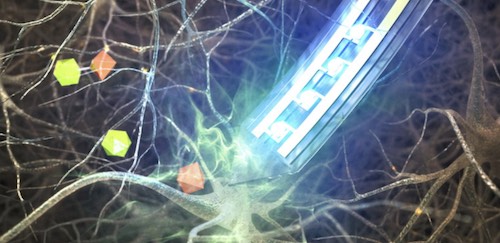
Photoswitches are interesting molecules able to reversible switch between two or more isomers
under proper light illumination. Upon photo-irradiation, molecular photoswitches
instantaneously modulate various physical and chemical properties of materials as well as biological
functions, thus making them chemical objects extremely promising for a post-synthesis control
and/or tuning of photochemical properties.
Strong coupling of molecular excitations with surface plasmons or other localized photonic modes
can favor the creation of hybrid half-light half-matter modes (i.e. polaritons) and lead to important
energy shifts in such quantum systems with respect to the original uncoupled transition energies.
The theoretical study of the polaritonic potential energy surfaces (poPES) can, thus, predict
significant changes in the photoswitch behavior under light-illumination, this opening the
possibility to manipulate and control photochemical reactions in plasmonic backgrounds.
The Chair of Materials Science and Nanotechnology is looking for a highly motivated Master student
able to perform a computational analysis within the framework of Density Functional Theory (DFT)
and of its Time-Dependent extension (TD-DFT) of the potential energy surface (PES) curves of the
groundstate and of the first excited states for a molecular switch of practical interest interacting
with metallic nanoclusters.
The thesis would, thus, deal with concepts proper of polaritonic chemistry, a recent research field
with a huge plethora of technological applications, going from drug discovery to
photopharmacology.
The research plan will include:

Photoswitches are interesting molecules able to reversible switch between two or more isomers
under proper light illumination. Upon photo-irradiation, molecular photoswitches
instantaneously modulate various physical and chemical properties of materials as well as biological
functions, thus making them chemical objects extremely promising for a post-synthesis control
and/or tuning of photochemical properties.
Strong coupling of molecular excitations with surface plasmons or other localized photonic modes
can favor the creation of hybrid half-light half-matter modes (i.e. polaritons) and lead to important
energy shifts in such quantum systems with respect to the original uncoupled transition energies.
The theoretical study of the polaritonic potential energy surfaces (poPES) can, thus, predict
significant changes in the photoswitch behavior under light-illumination, this opening the
possibility to manipulate and control photochemical reactions in plasmonic backgrounds.
The Chair of Materials Science and Nanotechnology is looking for a highly motivated Master student
able to perform a computational analysis within the framework of Density Functional Theory (DFT)
and of its Time-Dependent extension (TD-DFT) of the potential energy surface (PES) curves of the
groundstate and of the first excited states for a molecular switch of practical interest interacting
with metallic nanoclusters.
The thesis would, thus, deal with concepts proper of polaritonic chemistry, a recent research field
with a huge plethora of technological applications, going from drug discovery to
photopharmacology.
The research plan will include: